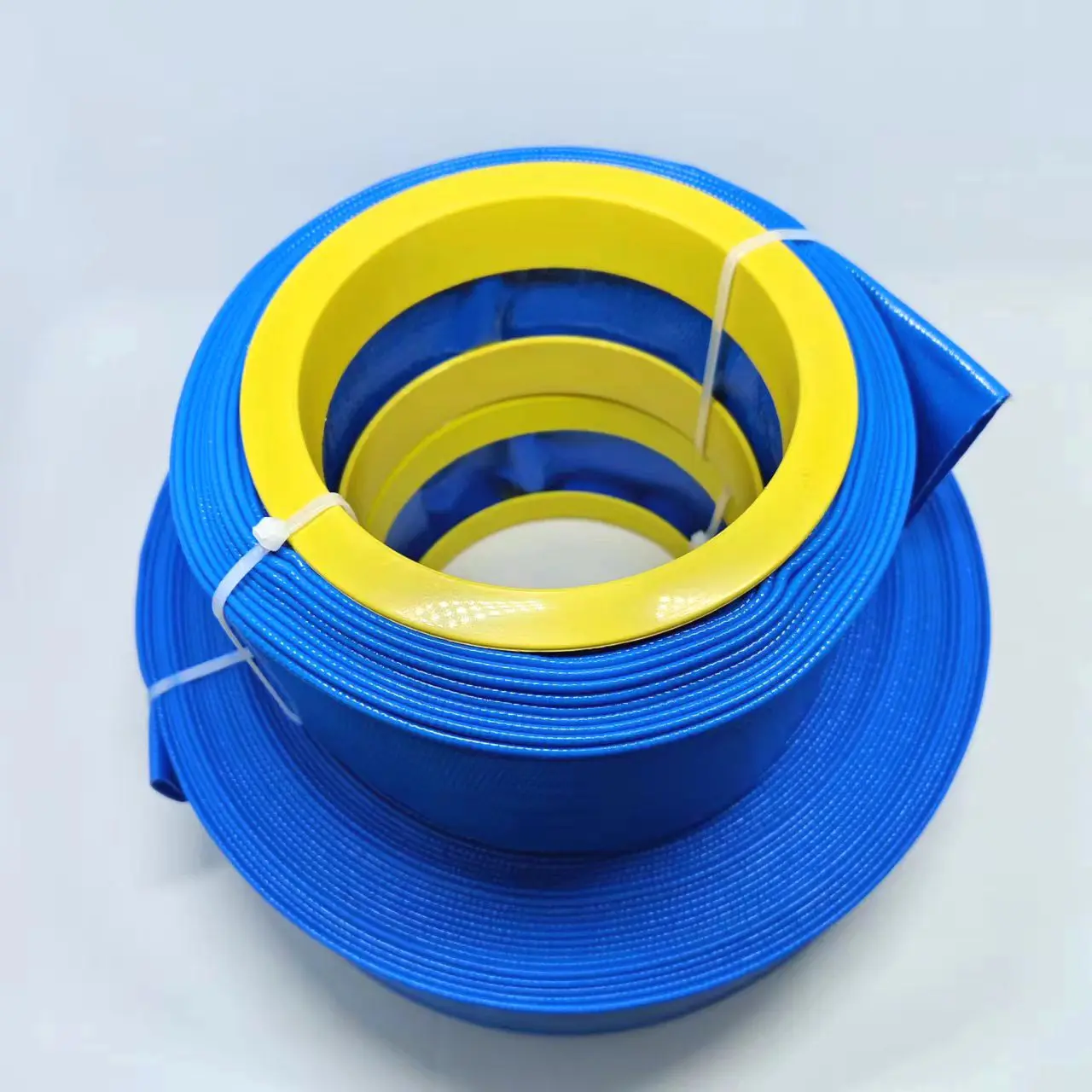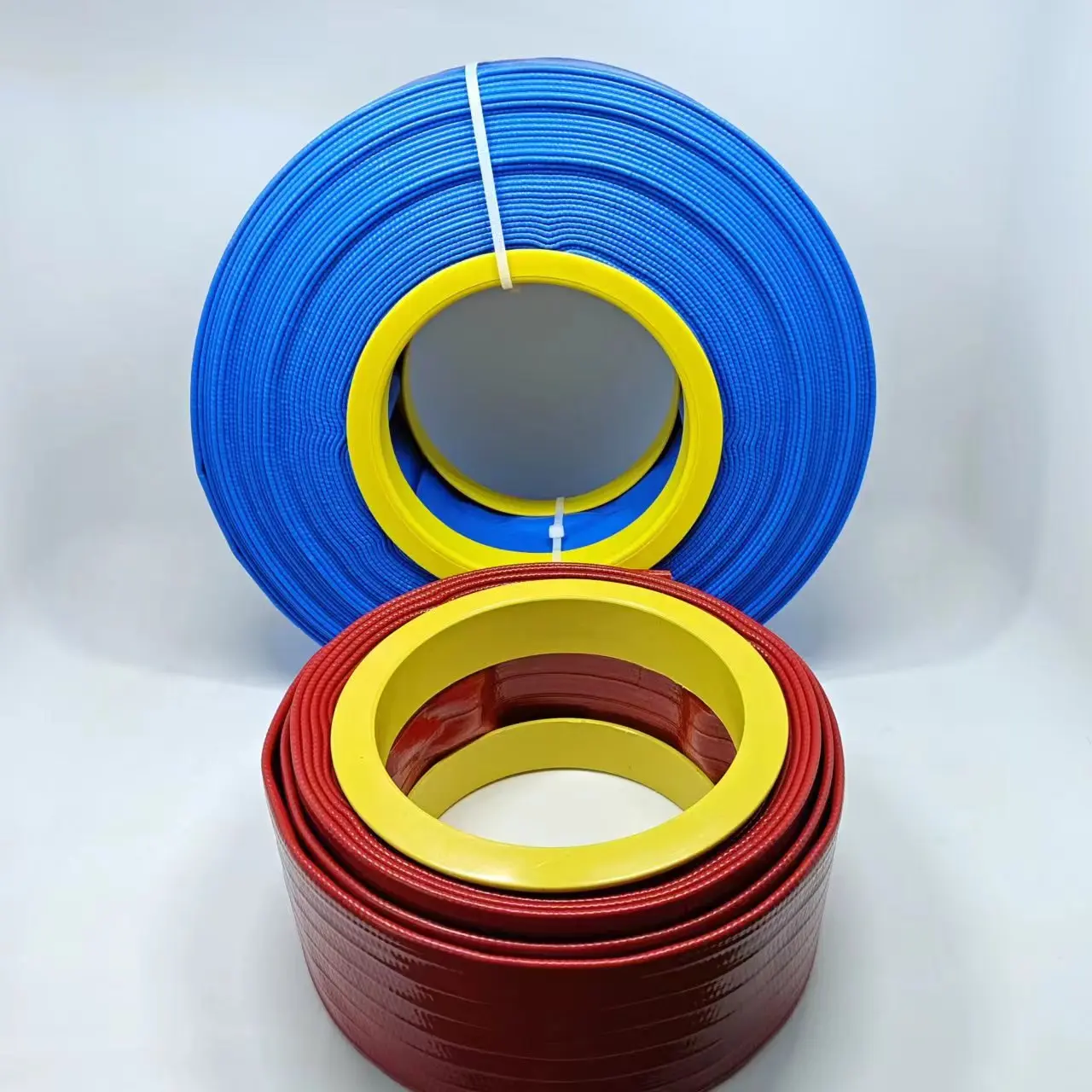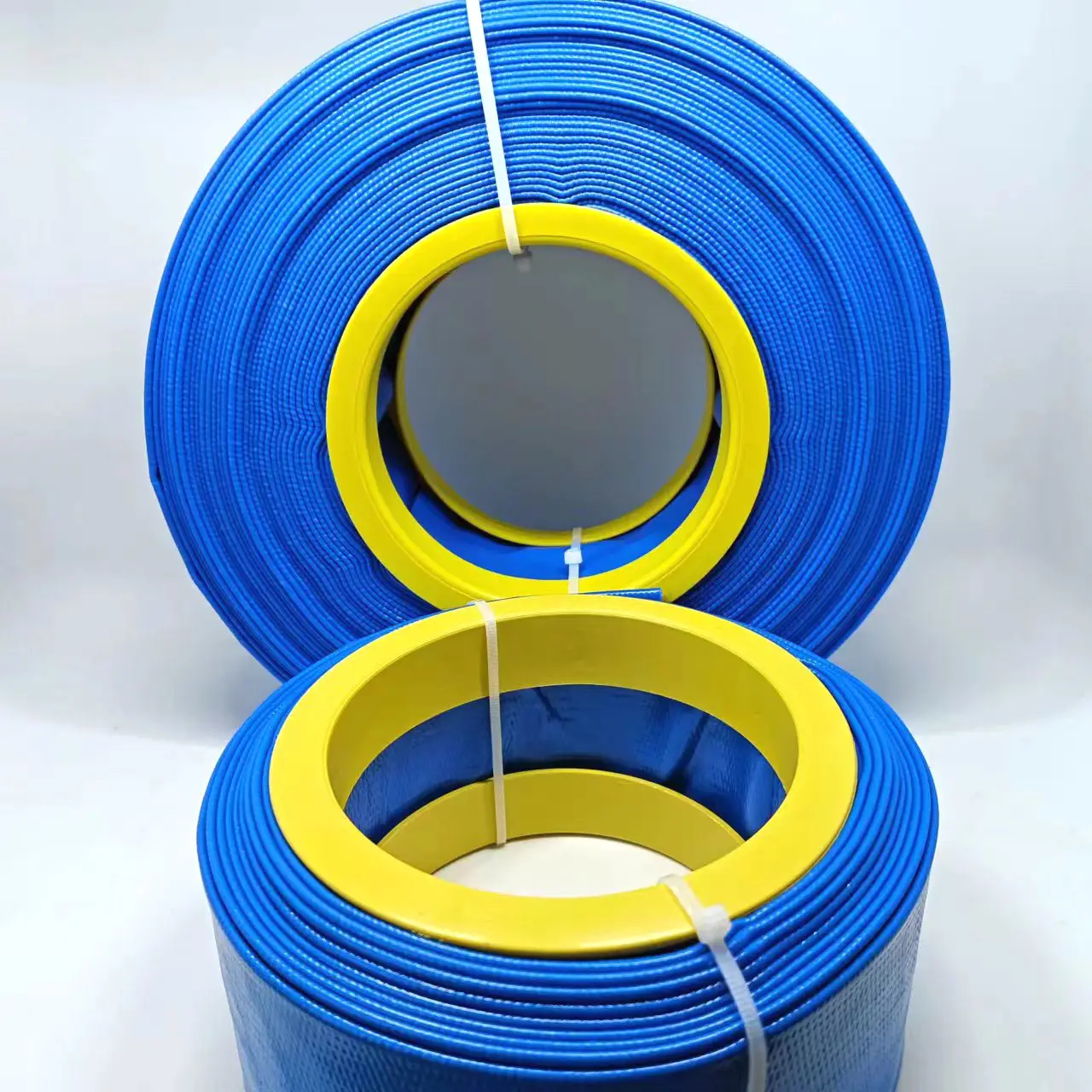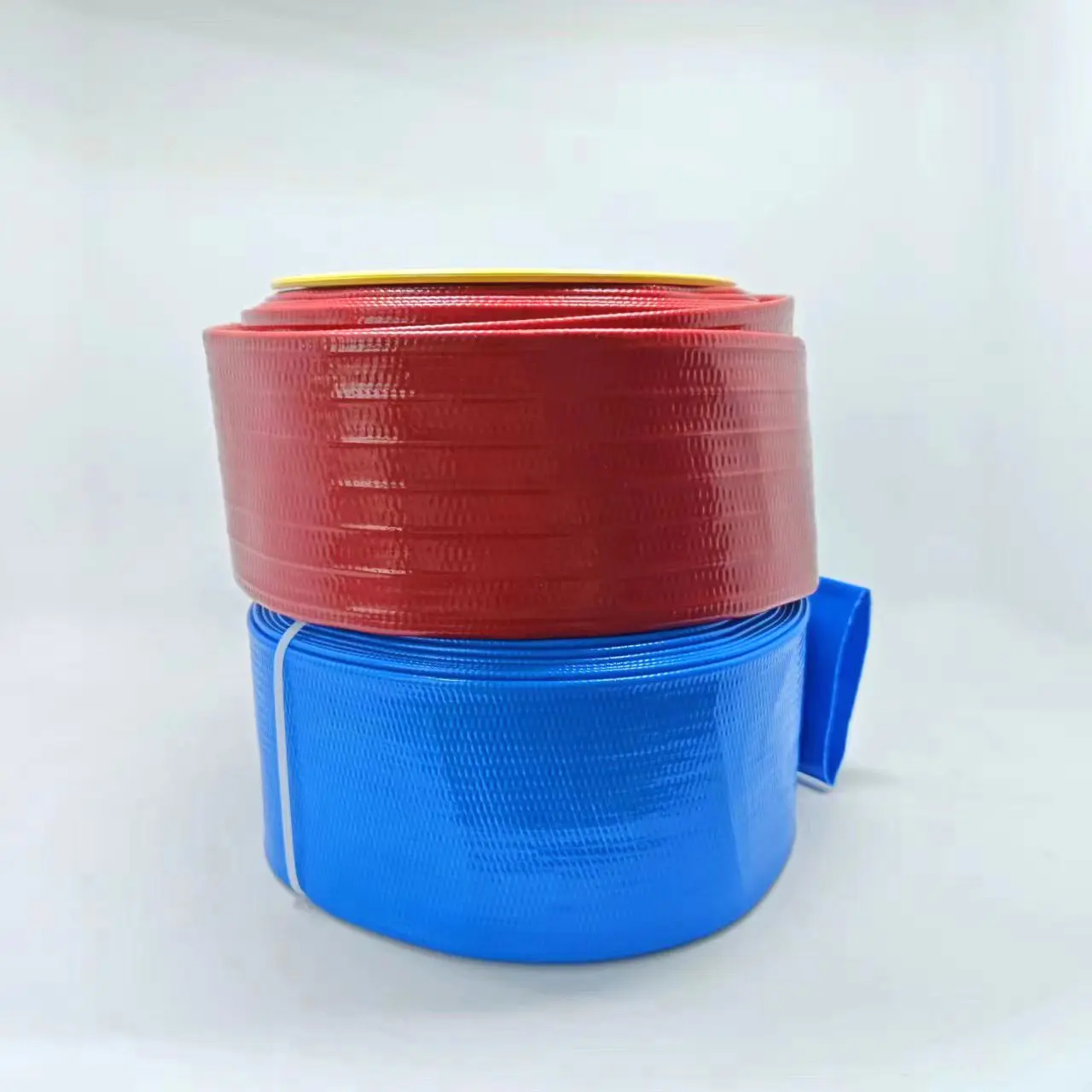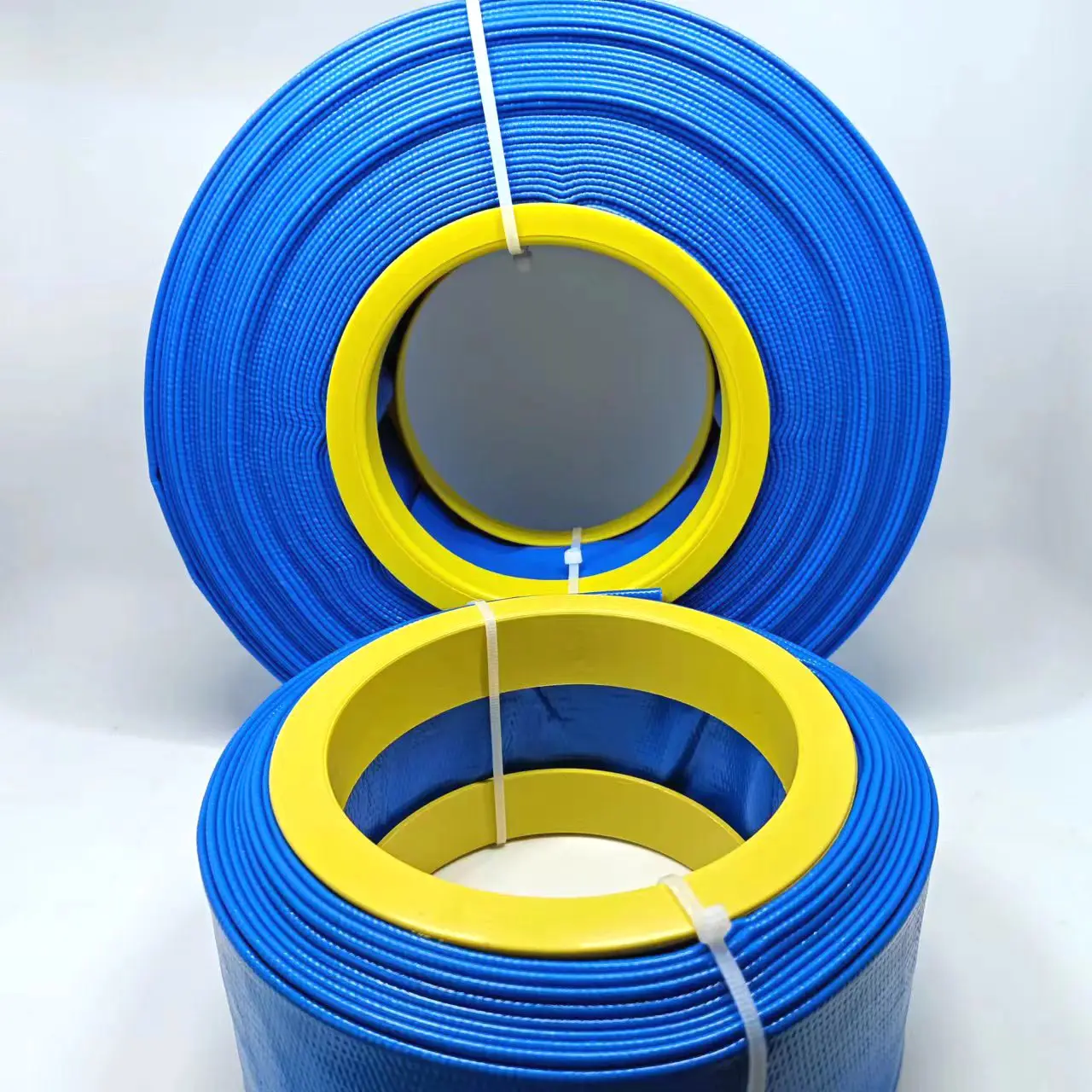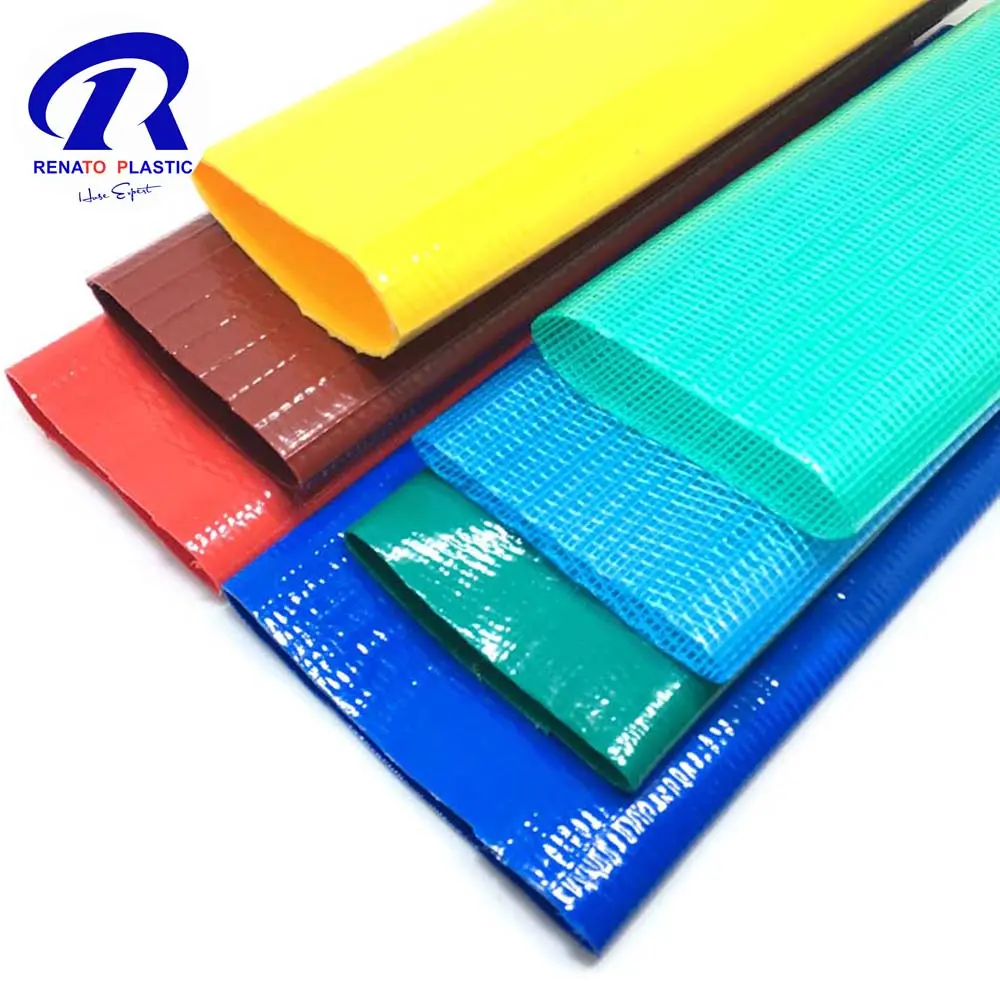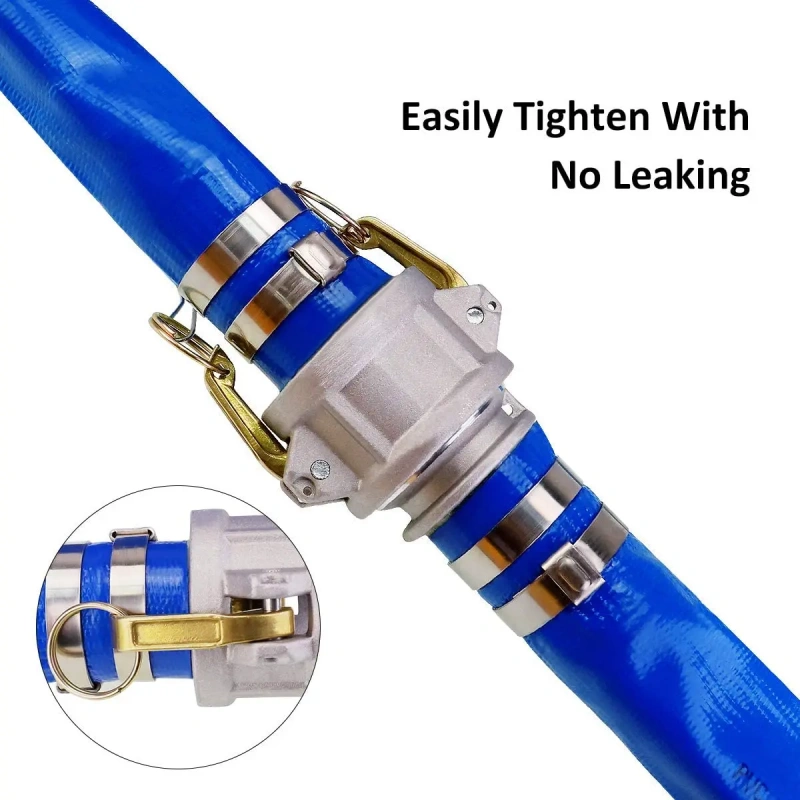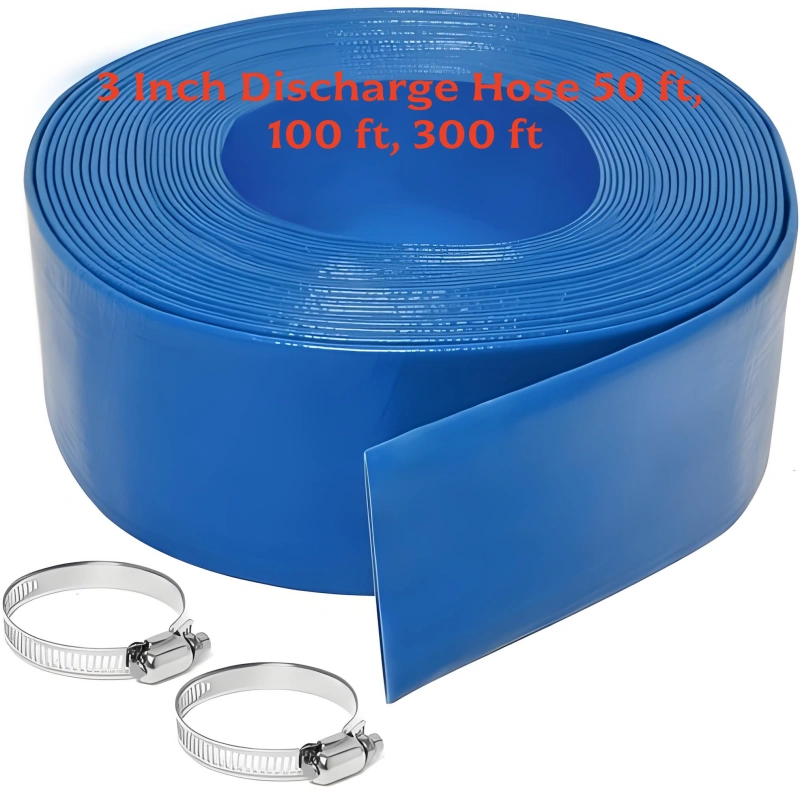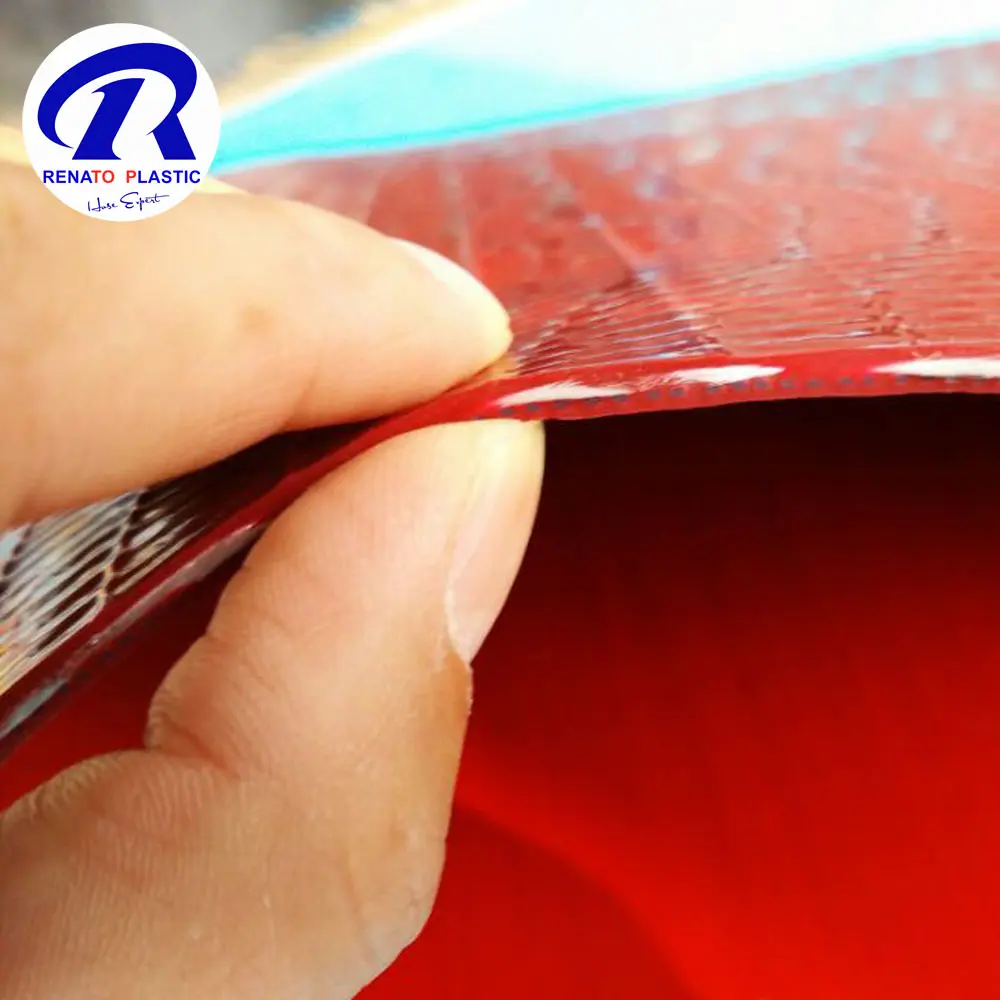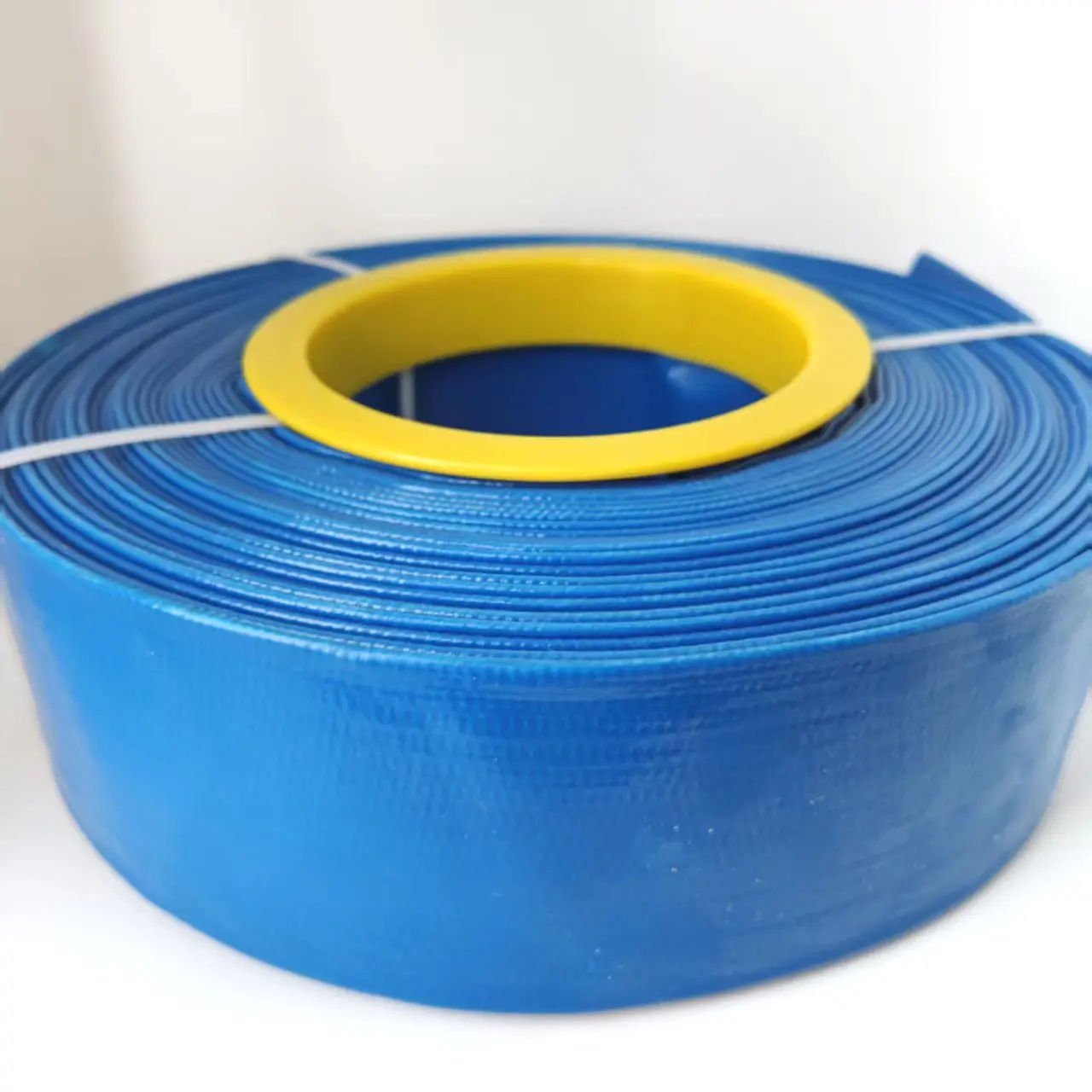Basic Overview of PVC Layflat Hose
PVC Layflat Hose is a lightweight, flexible water transfer hose widely used in agricultural irrigation, drainage, and temporary water delivery. Made from polyvinyl chloride (PVC), it is known for its flexibility, ease of storage, and transportability. In Ecuador, this hose is popular due to its adaptability and ease of use, particularly among small and medium-sized farms and for temporary water needs.
Ecuador’s diverse terrain, ranging from coastal plains to Andean highlands, creates varying agricultural and industrial water demands across regions. PVC Layflat Hose is favored because it can adapt to different topographies and climatic conditions. For example, in coastal banana plantations, it is commonly used for short-term irrigation or drainage, while in high-altitude areas, its lightweight nature makes manual handling and installation easier.
Additionally, PVC Layflat Hose has low maintenance costs and can be easily repaired if damaged, which is crucial for resource-limited rural areas in Ecuador. Compared to metal pipes or heavy rubber hoses, it is more cost-effective, making it suitable for budget-conscious small and medium-sized users.
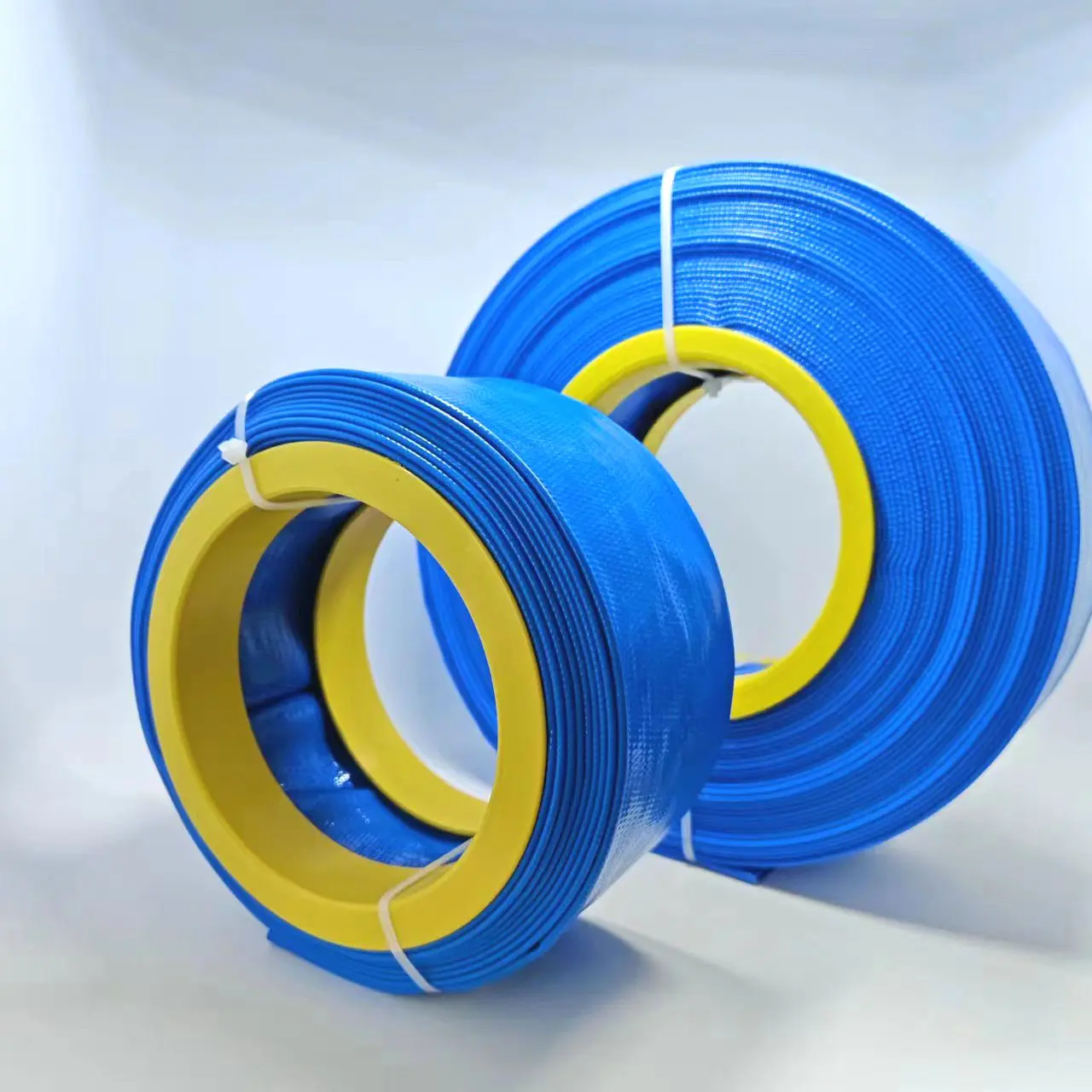
Applications of PVC Layflat Hose in Ecuador’s Agriculture
Agriculture is a key pillar of Ecuador’s economy, particularly the cultivation of bananas, coffee, and cocoa. PVC Layflat Hose plays a significant role in these sectors, primarily in the following ways:
(1) Banana Plantation Irrigation
Bananas are one of Ecuador’s major export crops, covering vast cultivation areas. Since banana plants require substantial water, irrigation efficiency directly impacts yield. PVC Layflat Hose is often used for temporary or supplemental irrigation due to its lightweight and portability. During the rainy season, it can also be employed for drainage to prevent waterlogging.
(2) Coffee and Cocoa Cultivation
Coffee and cocoa are typically grown in mountainous regions with complex terrain, making traditional irrigation systems difficult to implement. PVC Layflat Hose can be laid flexibly, adapting to slopes and terraces to provide even water distribution. Its foldable nature also allows for easy storage during non-irrigation seasons, saving space.
(3) Small Farms and Household Cultivation
Ecuador has many small-scale farms and household growers who often lack large irrigation equipment. PVC Layflat Hose is affordable and easy to operate, making it an ideal choice. For instance, in the Andean highlands, farmers frequently use it to channel water from streams or reservoirs to their fields.
Given the seasonal nature of agriculture in Ecuador, the temporary and flexible characteristics of PVC Layflat Hose make it an essential tool for many farmers.
Use of PVC Layflat Hose in Industry and Construction
Beyond agriculture, PVC Layflat Hose is widely used in Ecuador’s industrial and construction sectors. Its primary applications include:
(1) Construction Site Drainage
Ecuador’s rainy season brings heavy rainfall, often causing water accumulation at construction sites. PVC Layflat Hose is used for temporary drainage, redirecting water to designated areas. Its lightweight design allows workers to deploy and adjust it quickly, improving efficiency.
(2) Mining and Quarrying
Ecuador is rich in mineral resources, particularly gold and copper. During mining operations, groundwater management and washing processes often require temporary water transfer or drainage. PVC Layflat Hose is used for these purposes due to its abrasion resistance and ease of installation.
(3) Urban Emergency Drainage
In coastal cities like Guayaquil, flooding is common during the rainy season. Municipal authorities use PVC Layflat Hose as an emergency drainage tool to quickly redirect water and minimize disruptions to traffic and daily life.
Given the industrial and construction sectors’ demand for durable and convenient equipment, the use of PVC Layflat Hose in these fields is gradually increasing.
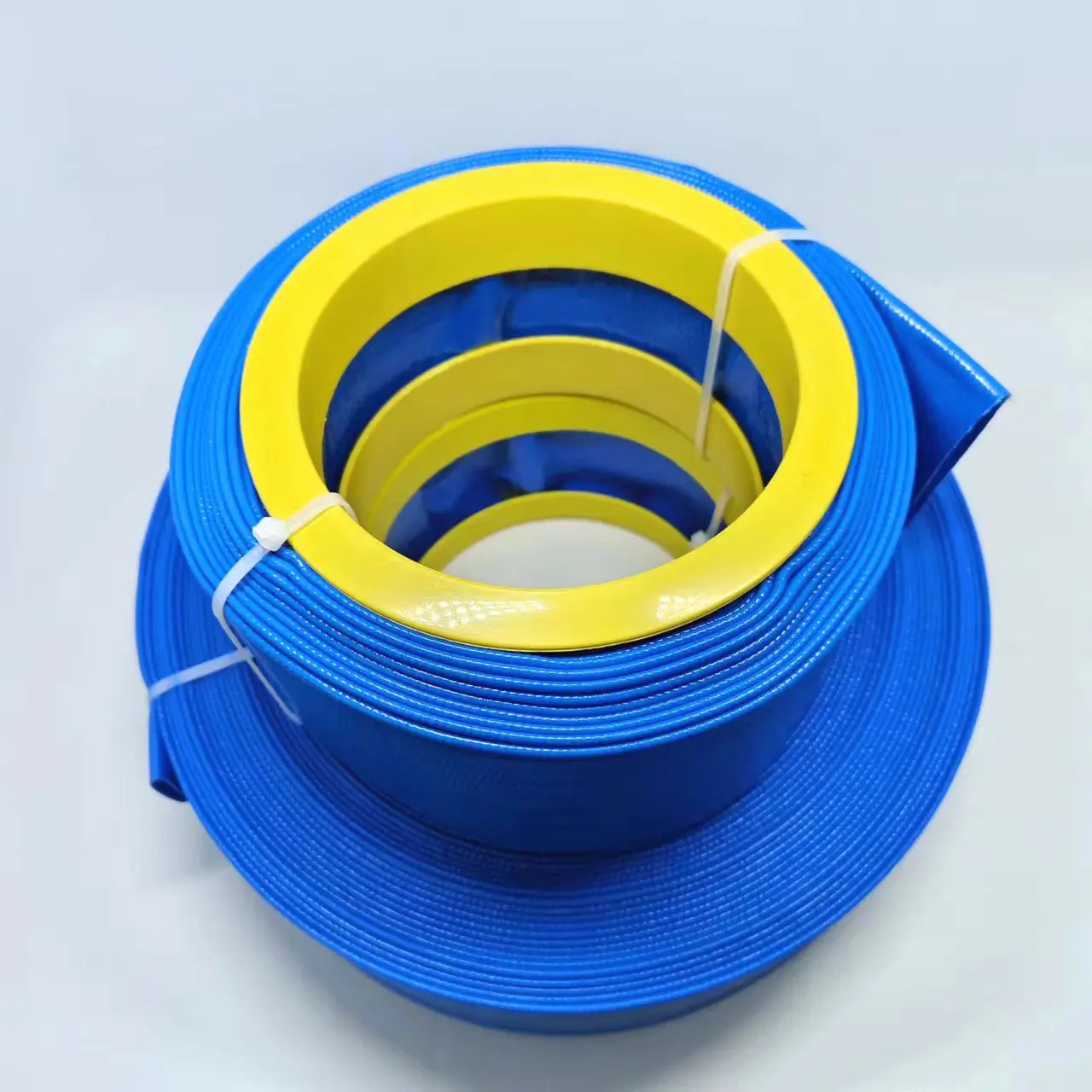
Advantages and Limitations of PVC Layflat Hose
Advantages:
Lightweight and Portable: Compared to traditional metal or rubber pipes, PVC Layflat Hose is easier to transport and install.
Low Cost: It is more affordable, making it suitable for budget-limited users such as small farms or temporary projects.
Easy Maintenance: Damaged sections can be repaired easily, reducing long-term costs.
High Adaptability: It can be used in various terrains, including slopes, terraces, and construction sites.
Limitations:
Limited Pressure Resistance: It is unsuitable for high-pressure water systems and is only recommended for low-pressure irrigation or drainage.
Susceptible to Mechanical Damage: In environments with rocks or sharp objects, it may be punctured or torn.
Moderate Weather Resistance: Prolonged exposure to strong UV rays may accelerate aging and reduce lifespan.
In Ecuador, users typically weigh the cost-effectiveness and suitability of PVC Layflat Hose based on their specific needs.
Demand Characteristics of PVC Layflat Hose in Ecuador’s Market
Ecuador’s market demand is influenced by its geography and agricultural structure, primarily reflected in the following aspects:
(1) Regional Demand Differences
Coastal Areas: Banana plantations drive demand for irrigation and drainage solutions.
Andean Highlands: Coffee and cocoa growers prioritize adaptability and portability.
Urban Peripheries: Construction sites and municipal drainage needs are more prominent.
(2) Seasonal Demand Fluctuations
During the dry season, agricultural irrigation demand increases, boosting sales of PVC Layflat Hose. In the rainy season, drainage needs become the primary driver.
(3) High Price Sensitivity
Since small and medium-sized farmers dominate Ecuador’s market, pricing is a key factor in purchasing decisions. Cost-effective products are more popular.
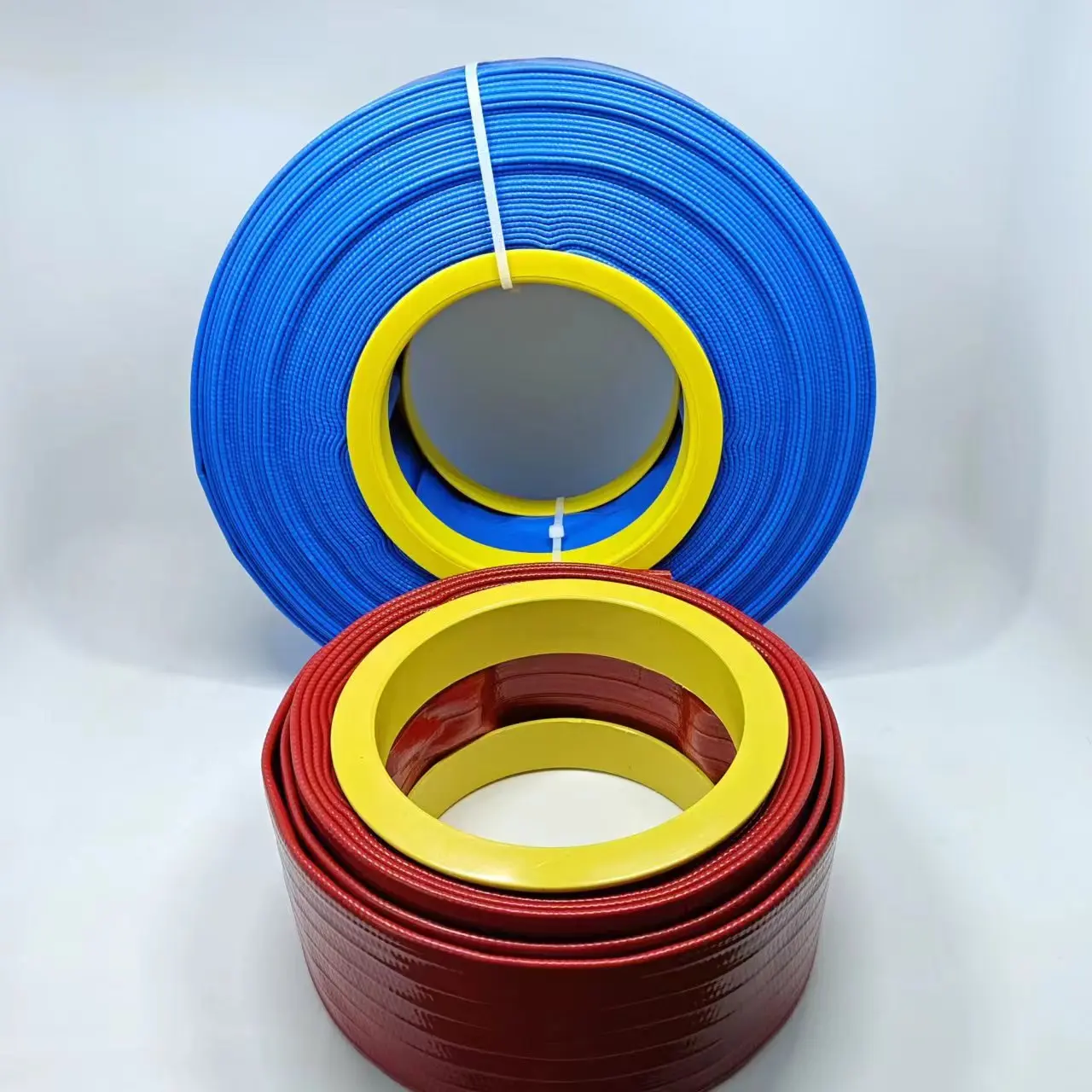
Purchasing and Usage Recommendations for PVC Layflat Hose
| Consideration | Recommendation |
|---|---|
| Hose Diameter | Choose an appropriate diameter based on flow requirements (common sizes: 1 inch, 2 inches). |
| Material Thickness | Opt for reinforced versions in rocky environments to enhance durability. |
| Installation Environment | Avoid direct contact with sharp objects or hot surfaces to minimize damage risks. |
| Storage Method | Clean and dry the hose after use, then fold and store it away from direct sunlight. |
| Repair Techniques | Small damages can be fixed with PVC glue or patches; extensive damage may require replacement. |
Current Market Status and Challenges in Ecuador
Currently, PVC Layflat Hose has a high penetration rate in Ecuador, especially in agriculture. However, it still faces several challenges:
(1) Intense Market Competition
Due to low entry barriers, many local and international brands compete, leading to price wars.
(2) Lack of User Education
Some farmers lack knowledge about proper usage and maintenance, resulting in higher-than-normal wear and tear.
(3) Threat from Substitute Products
Some high-end users may opt for more durable rubber hoses or drip irrigation systems, affecting the market share of PVC Layflat Hose.
Nevertheless, due to its cost-effectiveness and versatility, PVC Layflat Hose maintains steady demand in Ecuador, particularly among small and medium-sized farms and temporary construction projects.
